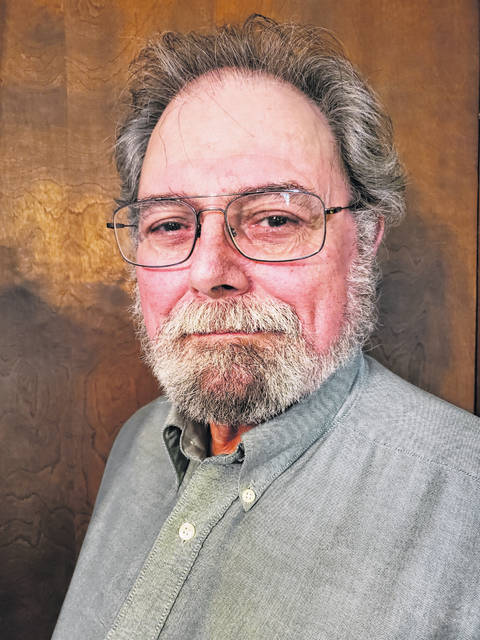
Editor’s note: This is part three of a three-part series on Memorial Day.
By the 20th century, various Union memorial traditions, celebrated on different days, merged, and Memorial Day eventually extended to honor all Americans who died while in the U.S. military service. Indiana from the 1860s to the 1920s saw numerous debates on how to expand the celebration. It was a favorite lobbying activity of the Grand Army of the Republic (GAR). An 1884 GAR handbook explained that Memorial Day was “the day of all days in the G.A.R. Calendar” in terms of mobilizing public support for pensions. It advised family members to “exercise great care” in keeping the veterans sober.
Memorial Day speeches became an occasion for veterans, politicians, and ministers to commemorate the Civil War and, at first, to rehash the “atrocities” of the enemy. They mixed religion and celebratory nationalism for the people to make sense of their history in terms of sacrifice for a better nation. People of all religious beliefs joined together and the point was often made that German and Irish soldiers – ethnic minorities which faced discrimination in the United States – had become true Americans in the “baptism of blood” on the battlefield.
In the national capital in 1913 the four-day “Blue-Gray Reunion” featured parades, re-enactments, and speeches from a host of dignitaries, including President Woodrow Wilson, the first southerner elected to the White House since the War. James Heflin, of Alabama, gave the main address. Heflin was a noted orator; his choice as Memorial Day speaker was criticized, as he was opposed for his support of segregation; however, his speech was moderate in tone and stressed national unity and goodwill, gaining him praise from newspapers.
The name “Memorial Day,” which was first attested in 1882, gradually became more common than “Decoration Day” after World War II but was not declared the official name by federal law until 1967. On June 28, 1968, Congress passed the Uniform Monday Holiday Act, which moved four holidays, including Memorial Day, from their traditional dates to a specified Monday in order to create a convenient three-day weekend. The change moved Memorial Day from its traditional May 30 date to the last Monday in May. The law took effect at the federal level in 1971. After some initial confusion and unwillingness to comply, all 50 states adopted Congress’s change of date within a few years.
By the early 20th century, the GAR complained more and more about the younger generation. In 1913, one Indiana veteran complained that younger people born since the war had a “tendency … to forget the purpose of Memorial Day and make it a day for games, races and revelry, instead of a day of memory and tears.” Indeed, in 1911, the scheduling of the Indianapolis Motor Speedway car race (later named the Indianapolis 500) was vehemently opposed by the increasingly elderly GAR. The state legislature in 1923 rejected holding the race on the holiday. But the new American Legion and local officials wanted the big race to continue, so Gov. Warren McCray vetoed the bill and the race went on.
Memorial Day is generally considered a civil religious holiday. Civil religion is an important component of public life in America, especially at the national level for its celebration of nationalism. The other civil religious holidays are Thanksgiving Day and Veterans Day.
Memorial Day endures as a holiday which most businesses observe because it marks the unofficial beginning of summer. The Veterans of Foreign Wars (VFW) and Sons of Union Veterans of the Civil War (SUVCW) advocated returning to the original date.
The VFW stated in 2002: Changing the date merely to create three-day weekends has undermined the very meaning of the day. No doubt, this has contributed a lot to the general public’s nonchalant observance of Memorial Day.
In 2000, Congress passed the National Moment of Remembrance Act, asking people to stop and remember at 3 p.m.
On Memorial Day, the flag of the United States is raised briskly to the top of the staff and then solemnly lowered to the half-staff position, where it remains only until noon. It is then raised to full-staff for the remainder of the day.
Across the United States, the central event is attending one of the thousands of parades held on Memorial Day in large and small cities. Most of these feature marching bands and an overall military theme with the active duty, reserve, national guard, and veteran service members participating along with military vehicles from various wars.
Scholars, following the lead of sociologist Robert Bellah, often make the argument that the United States has a secular “civil religion” – one with no association with any religious denomination or viewpoint – that has incorporated Memorial Day as a sacred event. With the Civil War, a new theme of death, sacrifice and rebirth enters the civil religion. Memorial Day gave ritual expression to these themes, integrating the local community into a sense of nationalism. The American civil religion, in contrast to that of France, was never anticlerical or militantly secular; in contrast to Britain, it was not tied to a specific denomination, such as the Church of England. The Americans borrowed from different religious traditions so that the average American saw no conflict between the two, and deep levels of personal motivation were aligned with attaining national goals.
Longest observances of Memorial Day: Since 1868 Doylestown, Pennsylvania, has held annual Memorial Day parades which it claims to be the nation’s oldest continuously running. Grafton, West Virginia, has also had an ongoing parade since 1868. However, the Memorial Day parade in Rochester, Wisconsin, predates Doylestown’s by one year.


